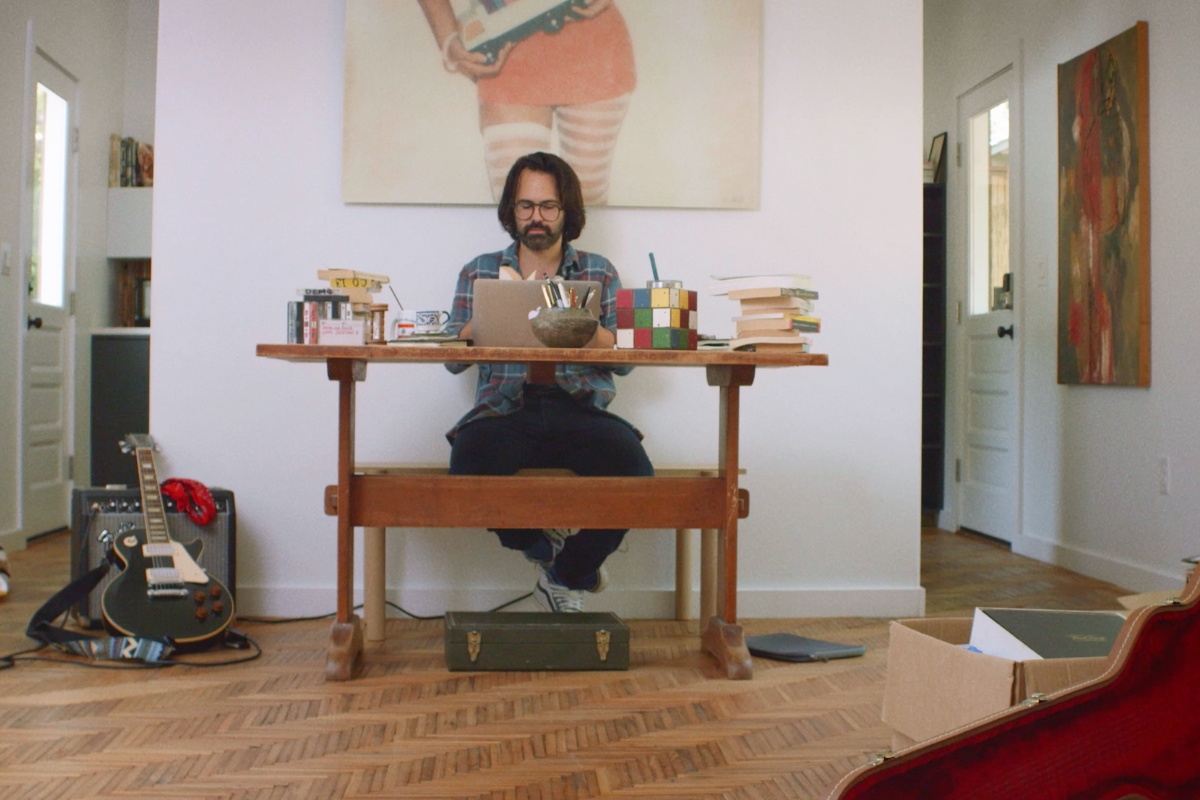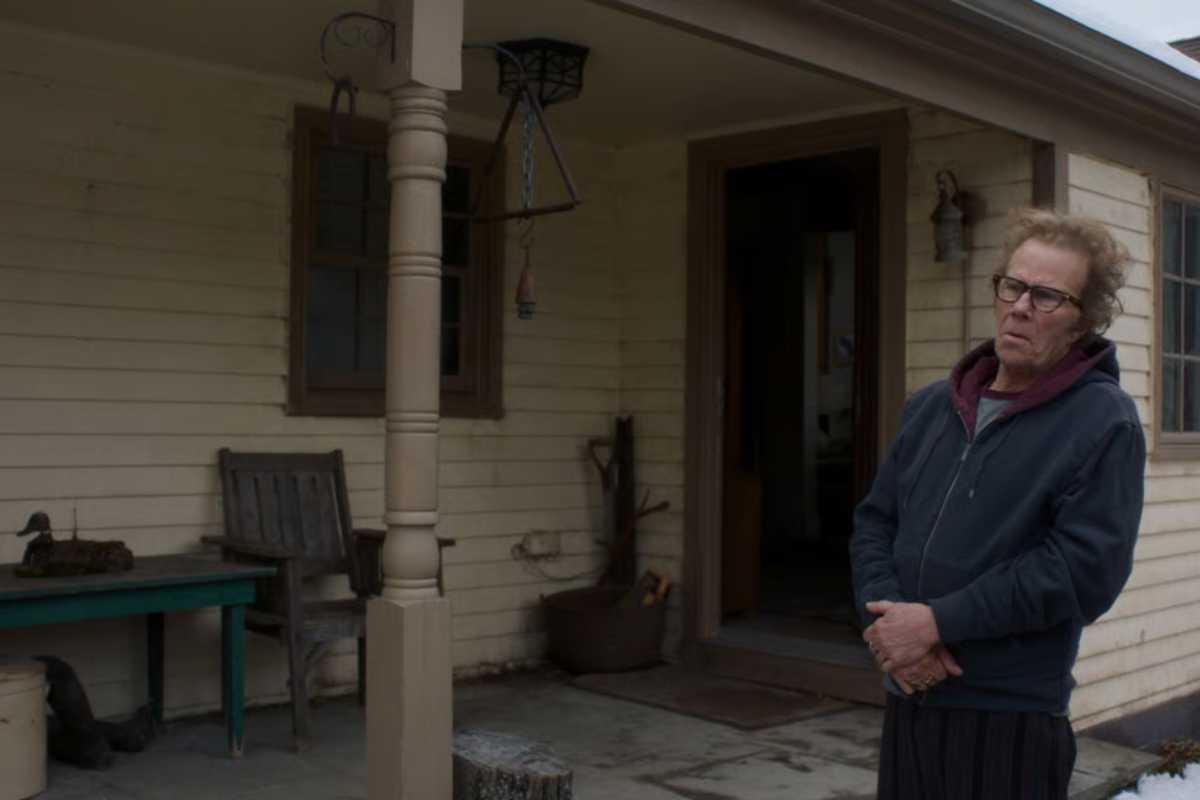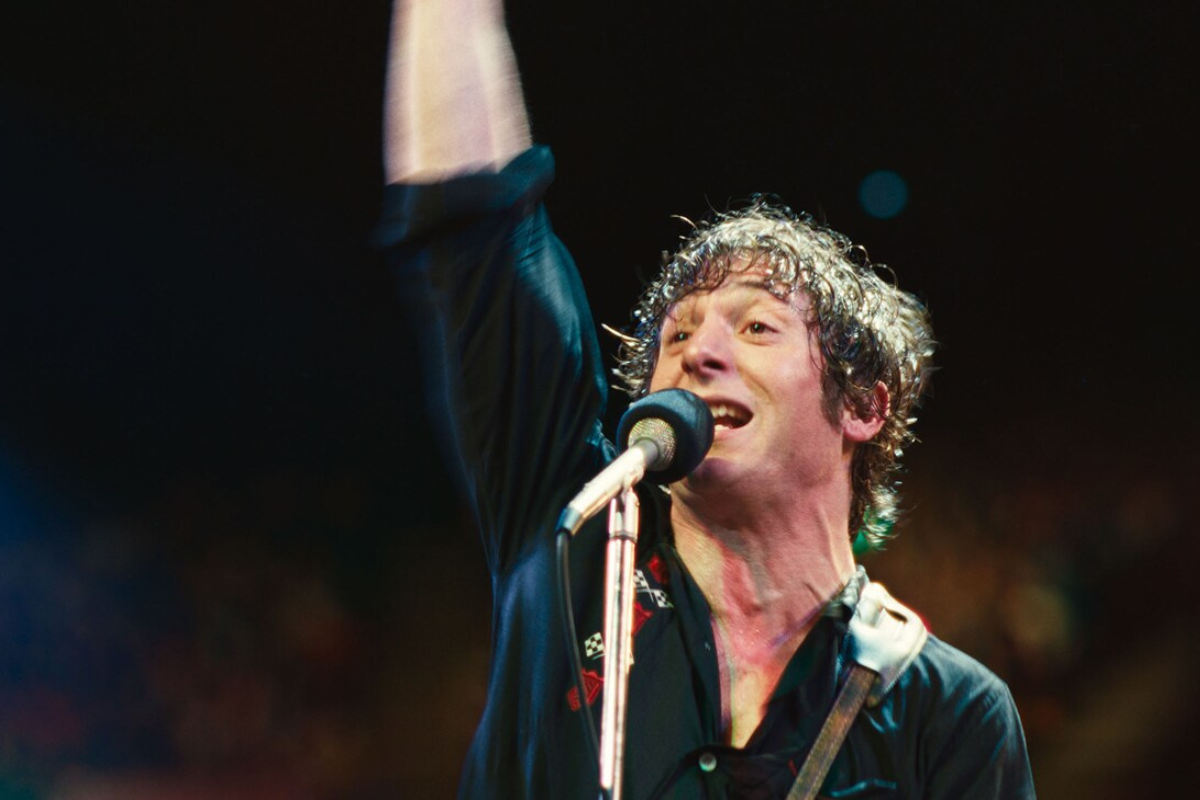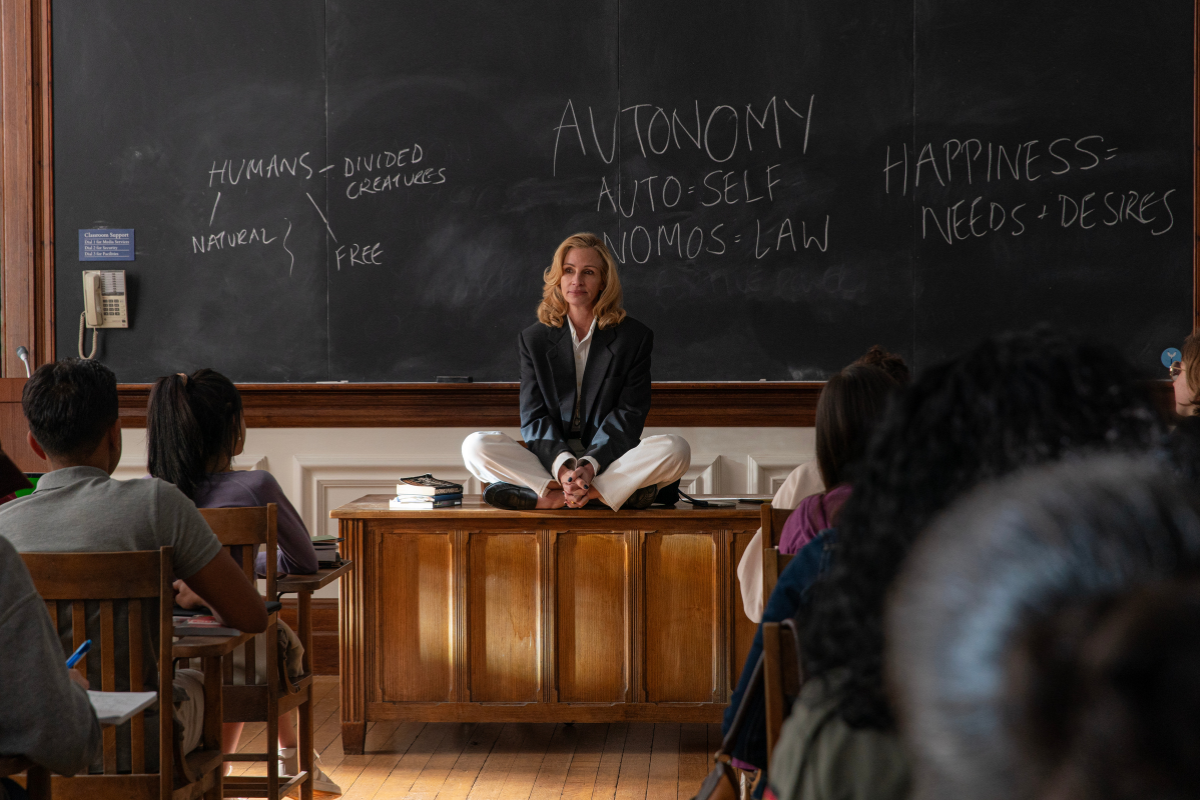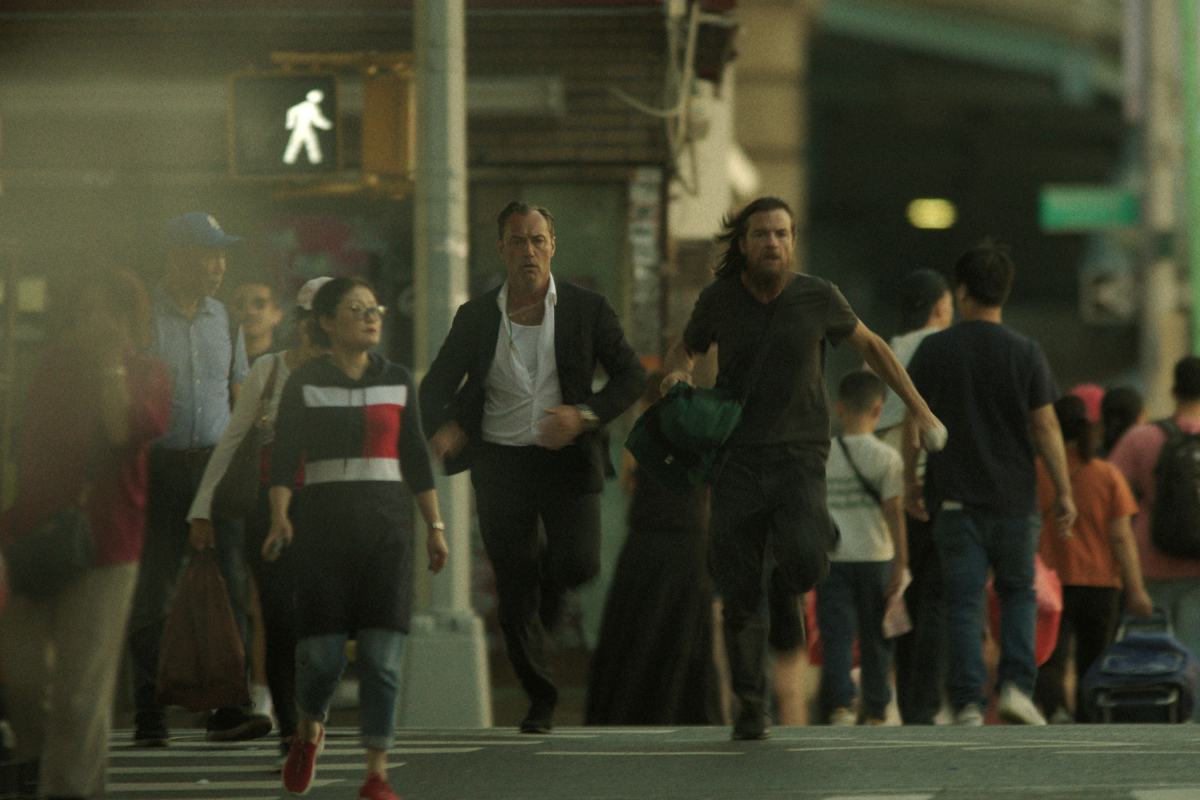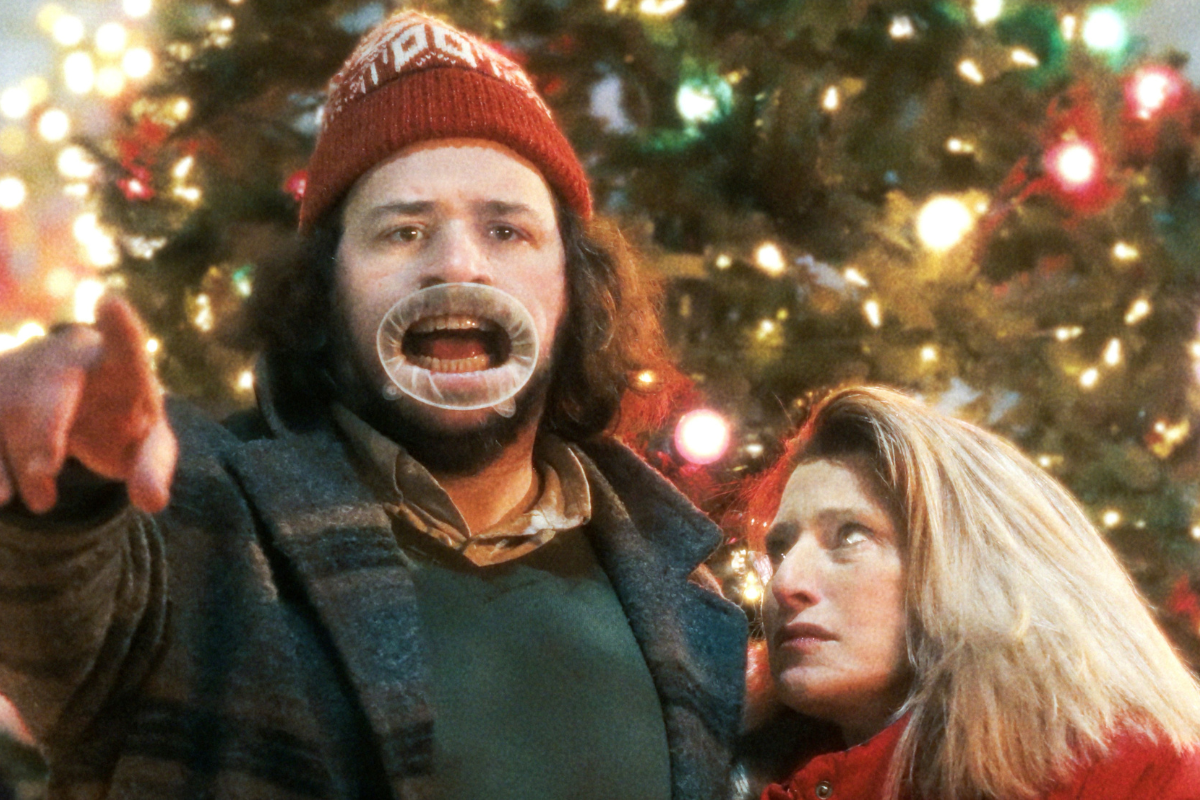An Interview with 2023 Sundance Film Festival’s ‘Cat Person’ and ‘You Hurt My Feelings’ Production Designer Sally Levi
Sally Levi spoke to us about the process of working with writer/directors to bring their films to life from a production design standpoint, and offered her perspectives on how writing with production design in mind can help make a better script.
Sally Levi thought she wanted to be an anthropologist, but found the anthropology in production design for films after her sister—a student at USC—dragged her into art design. At the 2023 Sundance Film Festival, she had not one but two films she did the production design for accepted to the festival. Cat Person, based on the short story that appeared in The New Yorker, tells a tale of contemporary dating in the form of a thriller. You Hurt My Feelings stars Julia Louis-Dreyfus and is a comedy film that takes aim at insecurities, privilege and narcissism.
Sally Levi spoke to us about the process of working with writer/directors to bring their films to life from a production design standpoint, and offered her perspectives on how writing with production design in mind can help make a better script.
SCRIPT MAGAZINE: What made you interested in production design in the first place?
Sally Levi: I was a high school dropout who was doing my art, and my sister was at USC Film School and they couldn't find people to do art department, and she was in the cinematography program. She asked me if I would start coming and doing this art design for them, and I did it, and that's actually what encouraged me to end up going first to film school and then to graduate school in Europe to study design, and then second graduate school, to go back to art. And then full circle, getting out of my second graduate program, I was like, 'Oh no, I have no way of making money, I just have a bunch of degrees.'
And then I picked up, moved to LA, said, 'Hey, I guess I'll try this.'
SCRIPT MAGAZINE: I think there are a lot of misconceptions about what Production Design is, especially from the perspective of writers who might not have ever been on a film set. In your view, what is in the purview of the production designer?
Sally Levi: I feel like my main job is interpreting what the script and the director's intent is, and visually communicating those ideas and emotions. In setting the tone, I come in, I read a script, and I have these crazy ideas. Oftentimes, when I read a script, it's in Technicolor, and I always think so far outside of the box, but when it comes down to it, usually I have to down-scale because it's oftentimes not needed to go so extreme.
In the next movie I have coming up, it was the opposite where it was just pushing it to the limit, but with these two smaller films [Cat Person and You Hurt My Feelings], it really felt like I was just getting in the head of Susanna [Fogel], the director of Cat Person and Nicole [Holofcener], director of You Hurt my Feelings. My real aim was to make things as close to what they wanted, as long as it was true and it was communicated, communicating the real story. Nothing that seemed unrealistic to me, and if it seemed unrealistic, I would say something...
SCRIPT MAGAZINE: I think good production design helps tell the story and almost always in ways that might be invisible to a lot of viewers, and I'm wondering with Cat Person or You Hurt My Feelings, if you've got an example of something that you were able to affect in the production design that you feel helped aid the story, even subconsciously, for viewers?
Sally Levi: Yes, definitely. For You Hurt My Feelings, a lot of the story takes place at two specific locations, one is the home of Beth and Don, and then the other is Don’s therapist’s office. In the living room, we went into a location that was humongous, a very, very expensive penthouse in New York, tons of square footage. But then what we did was we really worked with just the emotion of color, and so the living room is a sheet white, whereas their bedroom—it’s their intimate space—is a contemporary gray. And then their son's old room is actually just a mix of those two colors, it's the light gray, and so it was very important to me that there was this real equality in the relationship between Beth and Don.
Then I wanted this underlying feeling of compromise that they both had been making compromises throughout their lives, and so then the grey that we used in the bedroom, we actually ended up using also in the therapist’s office because gray is a masculine color, and it really, to me, represented who Don was, whereas the white, the culture, the art, that kind of atmosphere really was who Beth was.
And that echoes in Beth’s mother's apartment, and her sister's apartment as well. You had the two colors that were very primary throughout the film, and it really set the tone and it also went along with Nicole's previous movies, they also have a lot of those two tones and so that was very intentional. It was very intentional that it was in the bedroom and then the living space, but it might be so I don't think people are watching the movie and thinking about that.
SCRIPT MAGAZINE: There are those artistic decisions that really might take you twenty viewings to notice. I remember watching Sydney Lumet’s Network and realizing the film stock got less and less grainy as everything gets more produced and slick…things like that, it's not something you might realize first off, but it's very subconscious…
Sally Levi: It's a great way for the collaboration between me, the cinematographer, and the director, that's a conversation that we have together. I really love those conversations.
SCRIPT MAGAZINE: When you're initially looking at a script, what sort of cues are you looking for from the writer to start your work? What are the things that you really grab onto and make you feel like you can do your job really well?
Sally Levi: Well, I always look for in a script something that I find challenging because it's more fun for me. With Cat Person specifically, the end of the film I was really interested in burning down a set. So that grabbed me and I was like, 'Alright, I get to build this and burn it down and then also make that look burned down,' 'cause we're not really burning it down. So that was intriguing to me.
Susanna is a very visual director, and so the cues I got from Susanna was specifically her way of working... In my way of working are exactly the same. [She and the cinematographer] handed me like a very specific shot list and I followed it completely, so there was a way to really say, 'OK, now we're going to emphasize these areas, so we're gonna leave them empty.' In the Cat Person script, I thought the fantasies were really intriguing and I wanted to push them so extreme, but we kept them in reality, which ended up working beautifully and brilliantly, but if you watch the movie again, we work a lot with color.
If you watch it thinking about it, or if you did a color chart, you could see that Margot is the bright vibrant one, but then her fantasies are even more vibrant 'cause she's still living in reality, but also her line of work in the movie theater, that's also vibrant, but then if you go to Robert's house, it's much more muted. If you go to her parent's house, it’s much more muted. I did specifically really want to feel like, although her fantasies are the most vibrant, she's sort of always living in a fantastical world, we're just going to see some of the fantasy.
I also wanted to show that they're not on the same page. When Margot walks into Robert’s space, it's so obvious at the moment that she shouldn't be there, it's completely wrong, and when they're in a neutral space like the bar or the movie theater, it also feels like she shouldn't be there, but when they're in the more neutral spaces, we really feel like this could actually be a good relationship, and I do think it was important in Cat Person to keep offering that up as an option, like, 'Wait, you don't know how this movie's gonna end...'
SCRIPT MAGAZINE: What's your process like?
Sally Levi: My process is just taking the script and putting my own ideas on paper before Susanna and I had our initial meeting, and that was very interesting because I did put it on paper, and then when she saw it, she was like, 'Wow.'
I had a lot of the same references that I put into my deck that she had somewhere, and then she sent it to me and it was very interesting, they weren't necessarily the same picture, but it was either from the same film, or it was from the same scene, even just a different image from the same scene, 'cause we were probably looking at different places for the images, but that was great.
For You Hurt My Feelings, I read this for Nicole, it was so different when I first read it because it was supposed to shoot six months before it shot, and when I put my deck together for that, it would change so much... I'd already gotten a job, I was already going to work, and I started from scratch with her input, so that was different, 'cause I had to throw away the first deck 'cause so many changes were made. She's one of those directors who she saw gems in different locations or things in different locations, and then she was like, 'Oh, I have an idea, I can make this fun or to make this more interesting,' and so she would end up writing it into the script.
It was very fluid, and I would say a little more spontaneous. In my perfect world, I would be in the writer's room, that would be awesome, and we would do 3D models of every set, but it's not really possible at the scale of the smaller indies. But on the bigger movies, it is really nice.
One of my favorite moments of pre-production is just the page turn, where you sit with all the creatives and the director goes through and just describes every scene, and I just take notes. That to me is the most important six hours of my life. It’s also where I really can see the movie and then after that, we look for locations, which makes it better, because I know what's inside the director's mind.
SCRIPT MAGAZINE: What’s a great example of production design that just makes you salivate?
Sally Levi: I can say when I watched the show, not only did I love watching the show 'cause I really like the show, but I loved looking at the production design was Severance. And the reason it was so intriguing to me is because of how minimal it was, which is very challenging. People think, 'Oh, it's less,' but to add that depth when they're so little, you have to make everything so interesting and so precise. I just think that production designer did a fabulous job. I love the use of color, I love the use of white that he used, I love the two worlds and how different they are, and I also found that that show really collaborated with costumes beautifully, and I love... I usually... on every movie I've been on, I think I always become pretty close to the costume designers because in some ways we're doing very similar jobs. When I watch a movie or a show and you can see how much they communicate with it.
SCRIPT MAGAZINE: Is it more challenging to do stuff that's more minimalist, or closer to reality, or do you think it would be more difficult to do something out of whole cloth, like a Star Wars movie, for instance?
Sally Levi: They obviously have different challenges, I love builds. That's what I've done more of. I feel like I do build sets more often than I do almost anything else, and it's because it is actually easier. It’s easier to start from scratch, it's easier to work in a sound stage, and if I had an option, I would probably just build every set...unless it was exterior, but even exterior sets can be so awesome, which I've only gotten to do once or twice, but I find that going into real locations, they're never right. So it's not easier.
And oftentimes, you have to take all of the stuff out and start from scratch, so it's actually just annoying, and then not only do you have to paint it something, but then you have to paint it back. Working on a sound stage on a set is much easier. And I think it's more rewarding as well, and more appreciated.
SCRIPT MAGAZINE: When you're reading the script, what are the directions or things that you're looking for?
Sally Levi: The big things I look for? Is this female forward? Or is this a good representation of women? That's actually the first and most important thing I do. Now, if you've looked at my IMDB, I basically worked with women directors, I love working with women directors, it's not that I'm opposed to working with a male director, I just love the idea that these women are making it happen, and I wanna support them in every way and then... So that's number one.
Is it challenging? Number two.
With You Hurt My Feelings, I was a fan of Nicole, so I just wanted to work with Nicole.
And then after that, I think about the anthropology of what's happening in the story, and is it something that I really want to spend my time on 'cause it takes up my whole world and existence, and are these characters interesting enough that I wanna go and pick out every single last inch of objects in their world or that they own…? Do I wanna be intimate with these characters, 'cause all that's what happens, and oftentimes, the characters just don't do it for me, and so I just pass, and not that I really wanna do a movie, I'm not gonna do it.
SCRIPT MAGAZINE: Any last words of wisdom?
Sally Levi: I don't think people realize how one location oftentimes doesn’t really satisfy the requirment... For instance, we shot Cat Person, and it takes place at a college, so we shot in dorms, we shot in classrooms, we shot in open spaces. We had to go to three different places to actually find what we needed, and it was well worth it, but to capture the brutalist architecture, we had to go to one. To get the right dorms, we had to go to another, and they also had the right library and lab. But then we also went to Toys R Us, the factory in New Jersey, to get a lot of the shots there to create the mood, because the schools visually didn't have it.
With production design, oftentimes people think, 'Oh, you walk into a location and you just choose it and that's it,' and it definitely is something that's thought over and over and over again, and we go to extreme lengths to do it correctly and accurately, and I don't really mind that. Nobody really notices production design, 'cause I feel like if it's too noticed then maybe it's not good. I like that it's part of the story and it lives more in the subconscious.
SCRIPT MAGAZINE: Thank you so much for taking the time to speak with us.
Sally Levi: Thanks, Bryan, it was lovely meeting you.
You can find out more about Sally at https://www.sallylevi.com/
You can find more from Bryan Young at http://www.swankmotron.com
Learn more about the craft and business of screenwriting and television writing from our Script University courses!
Bryan Young is an award-winning filmmaker, journalist, and author. He's written and produced documentary and narrative feature films and has published multiple novels and a non-fiction book. He's written for Huffington Post, Syfy, /Film, and others. He's also done work in the Star Wars and Robotech universes. You can reach him on Twitter @Swankmotron or by visiting his website: swankmotron.com.


